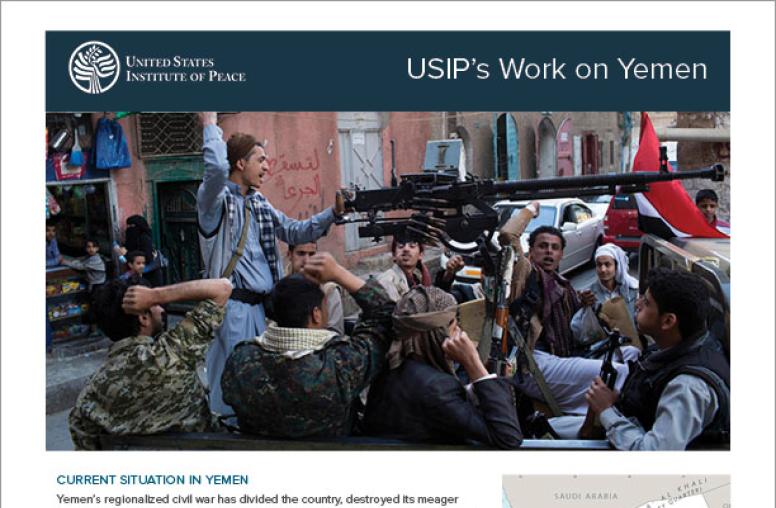Prisons in Yemen
Since the 2011 Arab Spring crisis, Yemen has faced ongoing serious security sector challenges. Part of this reform effort is the country’s prison system, which this report—drawing on visits to thirty-seven facilities in six governorates—documents from a systems perspective. This report provides a more in-depth assessment of detention facilities and their role within larger rule of law challenges. Opportunities for prison reform are emerging, many well within reach. Arabic language version available.
Summary
- Since the 2011 crisis sparked by the Arab Spring, Yemen has been in a critical political transition. Improving government institutions and rule of law are key goals. Reforming the prison system must be at the core of any strategy for improving rule of law institutions.
- Security is universally weak across central prisons. Facilities lack both the physical infrastructure and technical expertise to counter the serious security and terrorist threats they face. Prison breaks are frequent, resulting in serious consequences for broader rule of law and citizen security.
- Most facilities have no proper classification and segregation systems in place, and thus detainees held for lesser crimes often mix with serious offenders, and pre-trial detainees with sentenced prisoners. This practice not only violates detainee rights but also enables criminalization, radicalization, and recruitment throughout the detention system.
- Overcrowding and substandard prisoner care both result in physical and psychological damage and contribute to frequent rioting and security incidents.
- Most guards have no training before taking on their positions. This lack has a negative effect on treatment of detainees, security, and prison guards themselves. Prison guards showed signs of psychological strain, fear, and stress, in part due to managing roles they have not been adequately prepared for.
- Within the scope of challenges facing Yemen is a risk that reform of detention and prison facilities might not be prioritized. However, given the centrality of a safe and strong detention system for law enforcement and antiterrorism, a failure to do so would be a mistake.
- A number of simple, often not costly, reforms—such as establishing basic training for prison leaders, reinforcing a prison order and routine, establishing secure key control and prisoner classification, and baseline security protections—would address many of the most serious rights violations and security concerns.
About the Report
This report examines the prison system in Yemen from a systems perspective. Part of a three-year United States Institute of Peace (USIP) rule of law project on the post-Arab Spring transition period in Yemen, the study was supported by the International Narcotics and Law Enforcement Bureau of the U.S. State Department. With permission from the Yemeni Ministry of Interior and the Yemeni Prison Authority, the research team—authors Fiona Mangan and Erica Gaston for USIP, Aiman al-Eryani and Taha Yaseen of the Yemen Polling Center, and consultant Lamis Alhamedy—visited thirty-seven detention facilities in six governorates to assess organizational function, infrastructure, prisoner well-being, and security.
About the Authors
Fiona Mangan is a senior program officer with the USIP Governance Law and Society Center. Her work focuses on prison reform, organized crime, justice, and security issues. She holds degrees from Columbia University, King’s College London, and University College Dublin. Erica Gaston is a human rights lawyer with seven years of experience in programming and research in Afghanistan on human rights and justice promotion. Her publications include books on the legal, ethical, and practical dilemmas emerging in modern conflict and crisis zones; studies mapping justice systems and outcomes in Afghanistan and Yemen; and thematic research and opinion pieces on rule of law issues in transitioning countries. She holds degrees from Stanford University and Harvard Law School.



